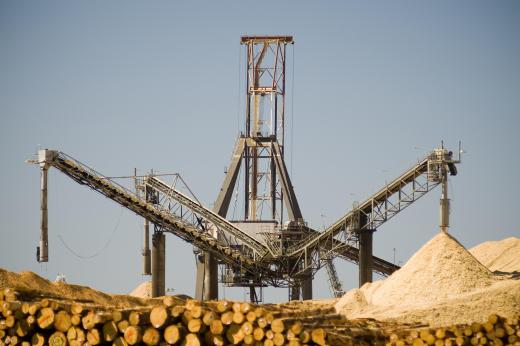Wood processing can describe various types of procedures used to utilize raw wood in order to create substances or supplies that serve as the raw materials for the manufacture of various wood-based goods. Many of the processes involve the introduction of chemicals and other additives that help to prepare the raw wood for use. Some of the examples of wood processing include the production of timber for use in construction, wood pulping, wood chipping, and even the production of what is known as prefabricated wood.
Some examples of wood processing focus on reducing wood for use in the manufacture of different goods. With wood pulping, the idea is to break down and treat the wood so that the cellulose content can be utilized in the creation of paper products. The same general idea is true with wood processing steps that are used to create chips and sawdust that are combined with adhesives and various chemicals to produce pressboard that is used to construct prefabricated sections, including plywood used in construction. The prefabricated wood can also be used to create pressed wood products such as desks, chairs, and tables.

In some instances, wood processing focuses on the creation of sturdy sections of wood, such as planks. In order to strengthen the natural wood, planking is often treated with chemicals to produce a coating that helps to retard deterioration. Treated lumber is typically used in building construction projects, as well as in the creation of wood fencing and similar building projects.

There are a number of different types of wood processing equipment used to generate the materials produced from natural wood. Chippers, saws, hoppers, and a variety of other devices are used to create the type of wood product desired. Over the years, attempts to reduce waste in sawmills and other types of wood processing facilities has helped to minimize the utilization of fresh wood in order to manage the demand for wood-based products, with many producers finding ways to make use of the sawdust and residue left after processing. There are even facilities devoted to reclaiming used wood by running harvested sections through a recycling process that allows the product to be used in the creation of new goods such as furniture, cabinetry, and recycled paper products. The ability to make more efficient use of wood has made it easier to allow time for forests and intentionally created wood gardens to replenish between harvestings, while also helping to reduce the amount of waste that ends up in landfills.

